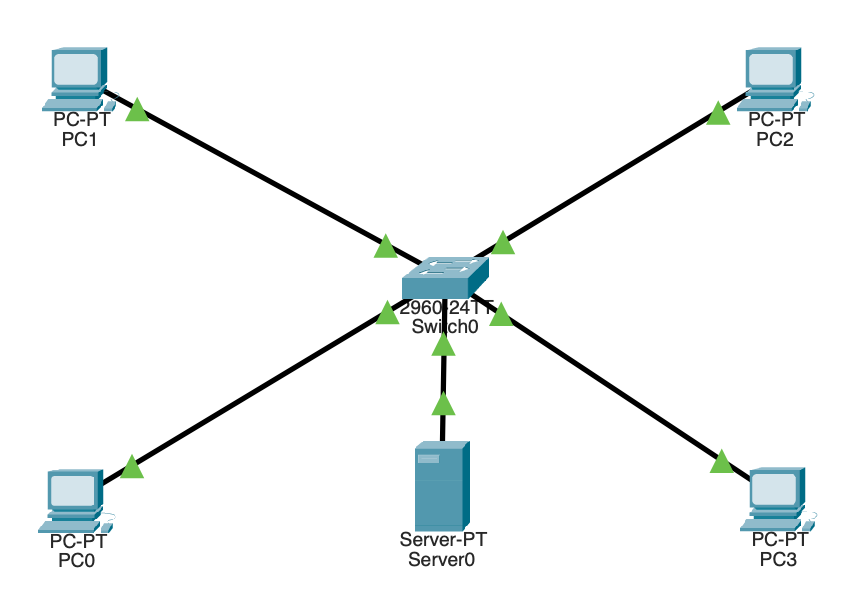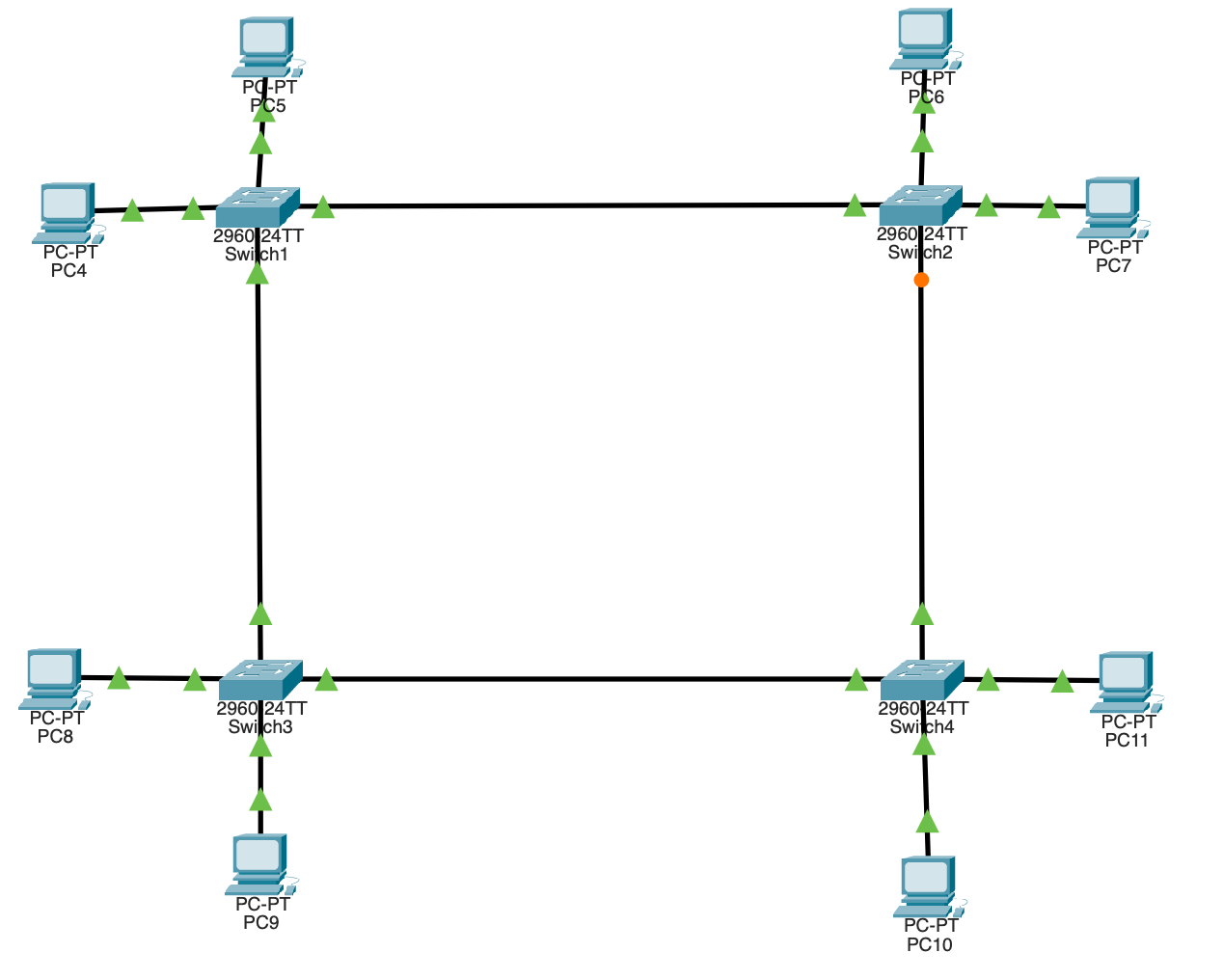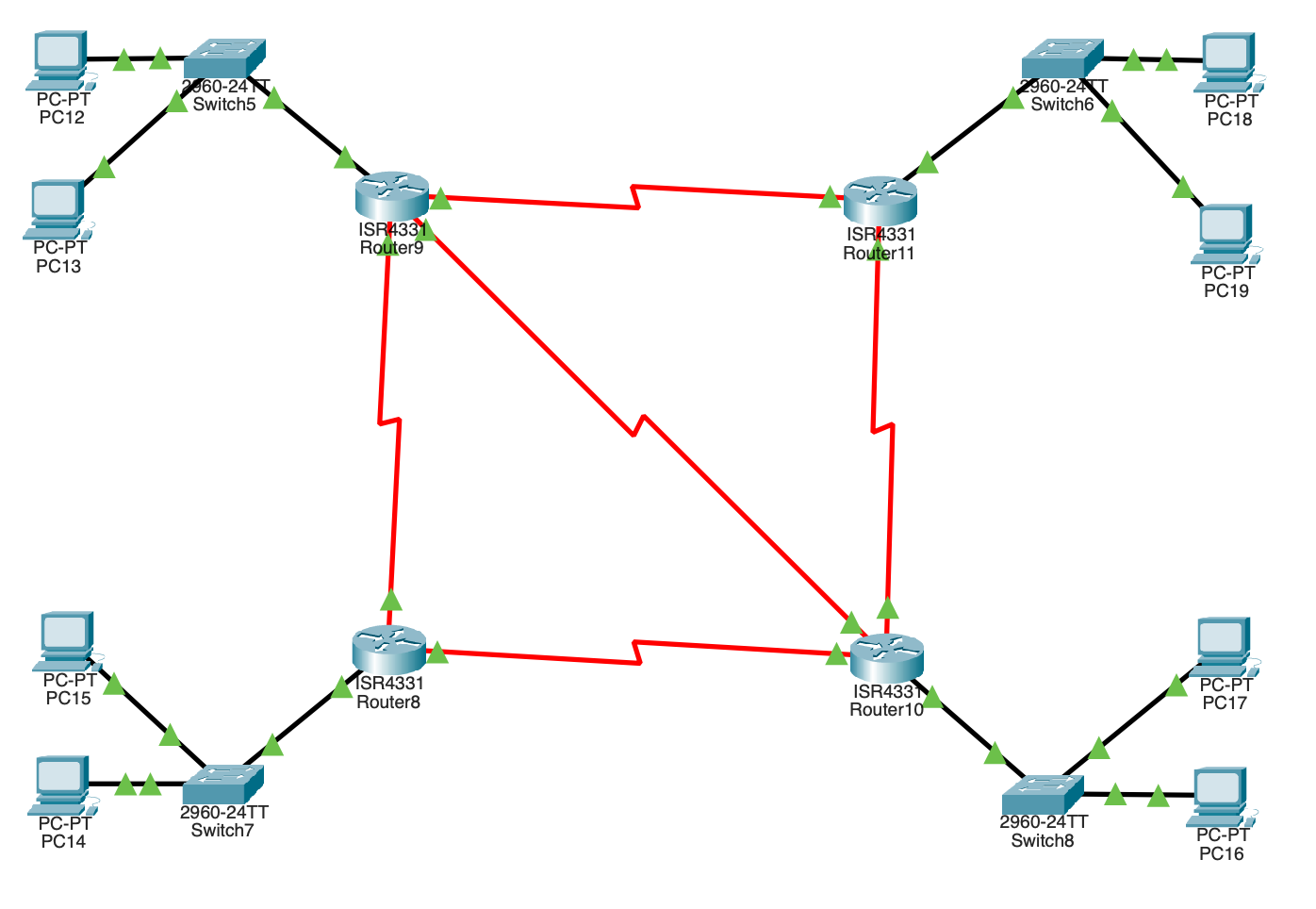───✱*.。:。✱*.:。✧*.。✰*.:。✧*.。:。*.。✱ ───
Introduction
Network topologies describe how devices in a network are physically or logically connected. They are important because the choice of topology determines the network’s cost, performance, reliability, and scalability. Network engineers have to design networks that meet the needs of their clients while balancing efficiency and budgets, so they have to make sure to pick the correct topology for their specific need.
Topology Designs
Star Topology
Screenshot

Description
In this star topology, multiple PCs/end devices are connected to a central switch using straight-through Ethernet cables. The switch acts as the central point of communication between the network, and each device has a dedicated connection to it.
Applications
Star topologies are widely used in modern LANs, such as offices, schools, and homes. This is mainly due to it being easy to manage and expand. Additionally, it’s a little more safe for these setups since if one PC or cable fails, the rest of the network is unaffected.
Ring Topology
Screenshot

Description
In this ring topology, four switch are connected in a closed loop using serial cables. Each switch is connected to two neighbors, which forms a circular path or “ring” for data.
The orange dot from Switch4 → Switch 2 is due to STP
Advantages and Disadvantages
The main advantages of a ring network is that they are simple to setup, data follows a predictable path, and each device has equal access of the network.
The biggest drawback of a ring topology is that if one link fails, such as between switch 2 and switch 4, the entire network can be disrupted unless redundancy is added, which the mesh topology benefits from. Troubleshooting can also be more difficult when compared to a star topology due to the.
Mesh Topology
Screenshot

Description
The mesh topology has four routers connected via serial cables in a partial mesh. Each router connects to at least two others, and each router also connects to a switch with two PCs using Ethernet cables. This provides multiple paths for data to travel between sides.
Benefits of Redundancy
A mesh topology provides redundancy to their network. This means that if one link fails, data can still travel through other paths. This increases reliability and fault tolerance, which is really important for large business or enterprise networks, although they are more complex to setup.
Comparison and Analysis
The start topology is the most cost-effective and easiest to scale, since adding new devices just requires a connection to the central switch. However, you have to make sure to choose a reliable switch since it’s the “backbone” of the network. If the switch fails, the whole network goes down.
The ring topology is less expensive than a full mesh but also less reliable, since a single link failure can disrupt communication. The mesh topology is the most reliable because of its redundancy, but it is also the most expensive and complex due to the amount of interfaces and cables required.
For a small business, he best choice would likely be a star topology because it is affordable, easy to manage, and is reliable enough for a small office environment. Mesh is more suited for a large organization or enterprise.
Reflection
From this project, I learned about different network topologies and how they effect cost, reliability, and scalability of their networks. I also learned how to use Cisco Packet Tracer some more, specifically with how to design and visualize networks.
One of the challenges I encountered was trying to set up the serial connections in the mesh topology. I was initially confused on how DCE vs DTE cables work as well as the clock rates within these cables; I initially thought that you needed two cables per connection, but I figured out that was wrong. I also had to add a NIM card to the router to give the router serial ports, which was a challenge trying to figure out how to do that. However, these challenges helped me better understand how WAN links work in actual networks.
───✱*.。:。✱*.:。✧*.。✰*.:。✧*.。:。*.。✱ ───